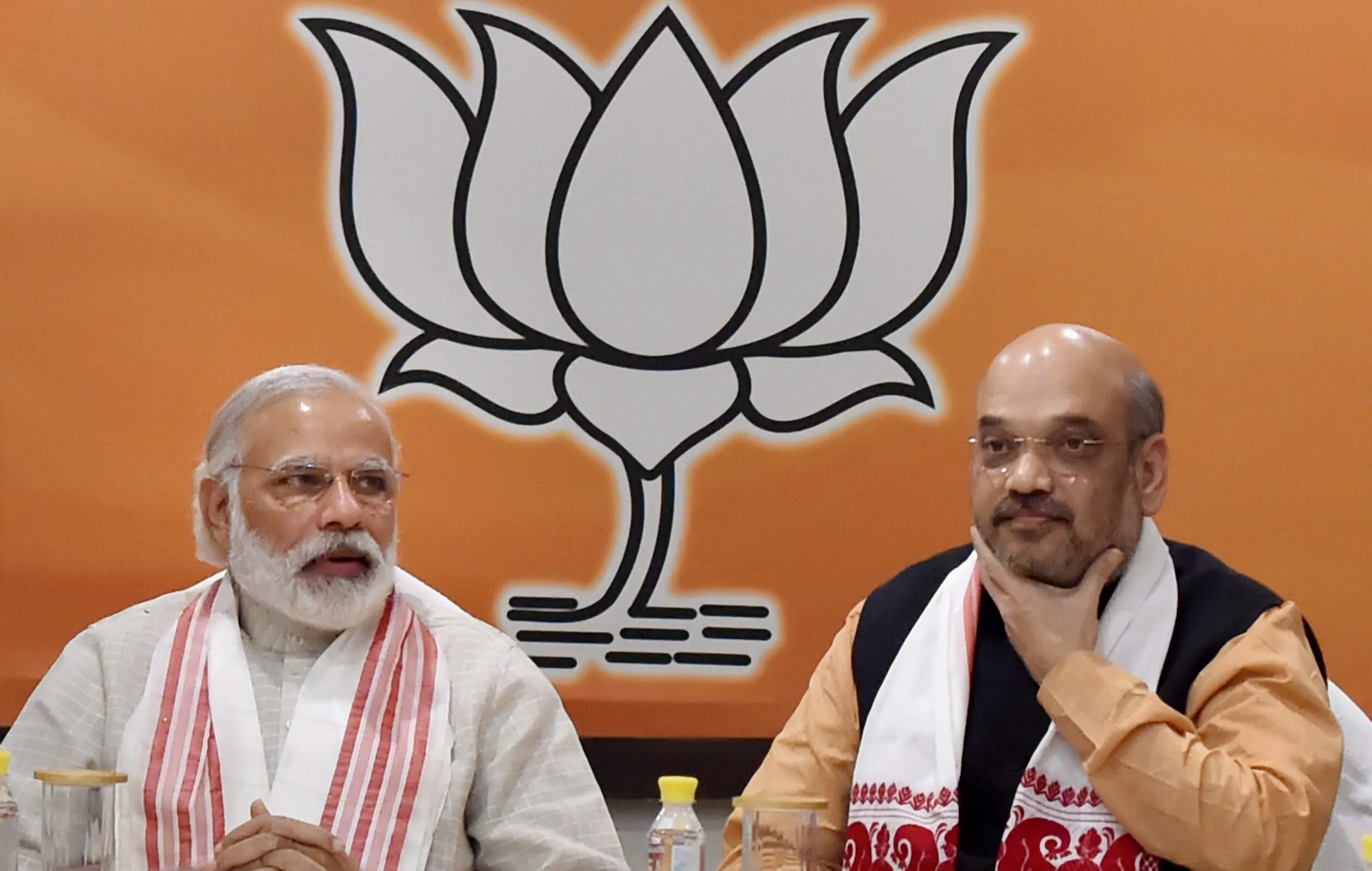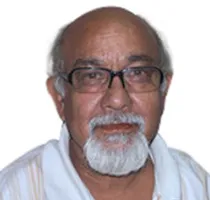-
CENTRES
Progammes & Centres
Location

After the spectacular victory in the 2014 general elections, the Bharatiya Janata Party has not only become a ruling party at the centre, but it has also metamorphosed into a new entity different from its past.
It is said that change is always good. Whether the party’s transformation will ultimately turn out positive cannot be determined at present, but it is visible and can be felt by parry leaders, party cadres and media persons.
It has travelled from collective leadership to essentially the leadership of two. All major and crucial decisions are taken between Prime Minister Narendra Modi and BJP president Amit Shah.
Like in the government, power has now been concentrated in few hands. Opaqueness has substituted transparency in decision making process. Scope or possibility of a dissent has become rare. Decisions are taken at the top and are endorsed without much discussion by different party forums.
From information available in public domain, the change has the stamp of approval from the party’s mentor organisation, the Rashtriya Swayamsevak Sangh (RSS) which gave its consent after the party won the elections and Modi emerged as the tallest leader of the party.
What are these noticeable changes? It began when the party decided to appoint Amit Shah to head the party for the remaining tenure of Rajnath Singh who had become the Union Home Minister in the Council of Ministers of Prime Minister Narendra Modi.
The decision was against established party norms and conventions because both positions in the government and the party went to one single state of Gujarat which would have been treated as anti-party in earlier years. It was a clear example of concentration of power.
The RSS did not oppose it and readily agreed to it possibly because it wanted to send a signal to veteran leaders like former party presidents L. K. Advani and Murli Manohar Joshi that they should accept the fait accompli and retreat into retirement.
The RSS is not against this trend as it also functions on almost the same lines. The RSS operated behind the closed doors and its decisions are often shrouded in mystery.
The RSS, by not opposing and rather agreeing with the decision, also wanted to be on the good side of the party government and the country’s chief executive so that its ideological agenda could be pushed without much trouble.
Once appointed to head the party, Shah got another three-year term in his own right. Even after the party’s defeat in Delhi and Bihar assembly elections, there was no discussion or even a murmur of protest or criticism of either the party president or the Prime Minister who had steered the election campaign.
The BJP’s office bearers, who were appointed by the duo of Shah and Modi, were made inaccessible to party leaders, cadres and media persons. This process had indeed begun even before Shah came to command the party.
The BJP I knew since 1988, when I started covering it for a Delhi English daily Patriot, was looking for ways to revive its political fortunes after its decimating electoral defeat in 1984 general elections when its strength in the Lok Sabha were reduced to two. Then, the party leaders were accessible to media and they were willing to share information. Veteran party leader and former Deputy Prime Minister L. K. Advani was heading the party then.
A reporter covering the party could knock the doors of different office bearers at the 11 Ashok Road party headquarters and they would meet them provided they had time. It would happen rarely that any leader would not meet a reporter individually or collectively.
During the party’s national executive and national council meetings, which used to be held in different cities and towns, not only that party spokespersons would brief the media but they were also available for off the record understanding of events and individuals.
Party leaders were also meeting media persons at their places of stay. This was an accepted norm and practise in the BJP and it continued till 2013. After the tenure of Nitin Gadkari as the party president came to end on January 23, 2013, and Rajnath Singh took over the reins of the party, things began to change.
However, as a matter of fact, the situation was different when Rajnath Singh was the party chief from January 1, 2006 till December 19, 2009. Things began to be different for the media when Rajnath became the party chief for the second time. The current BJP president Amit Shah was picked up as a general secretary of the party in Rajnath Singh’s team. Party insiders say that it was Shah, who as a general secretary, convinced the party president to make accessibility restricted or rigorously filtered.
Shah’s argument, reportedly, was that party office bearers waste lots of time in meeting and talking to media people and much undesired and unwanted information goes out which causes damage to party’s image and interests.
In earlier times, the BJP used to criticise the high command culture of the Indian National Congress where high command was a synonym to Gandhis. But now the high command culture is visible in a party which boasted of internal democracy in the party.
Now, senior and experienced leaders have been kept out of the consultative process and decision making. The party, under the Modi-Shah leadership, had decided to form a committee of senior leaders called ‘Marg Darshak Mandal” (Path Bearer Committee). Advani and Joshi were nominated to this committee, but its meeting is yet to take place. Others like former ministers in Vajpayee government and senior leaders feel unwanted or are ignored by the present party leaders.
While the recently ushered changes are suiting those who are in power today, absence of a collective leadership and internal democracy will hit the party hard in bad times when and if they come.
The BJP has changed. Will it be for the good?
The views expressed above belong to the author(s). ORF research and analyses now available on Telegram! Click here to access our curated content — blogs, longforms and interviews.

Satish Misra was Senior Fellow at ORF. He has been a journalist for many years. He has a PhD in International Affairs from Humboldt University ...
Read More +